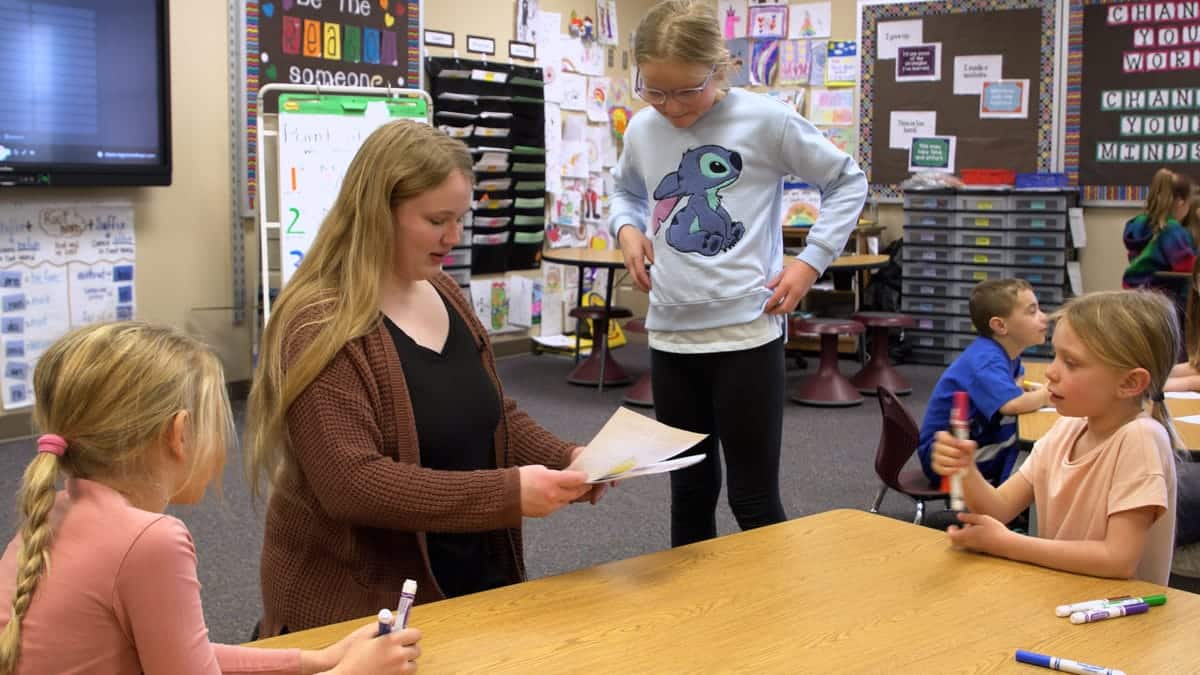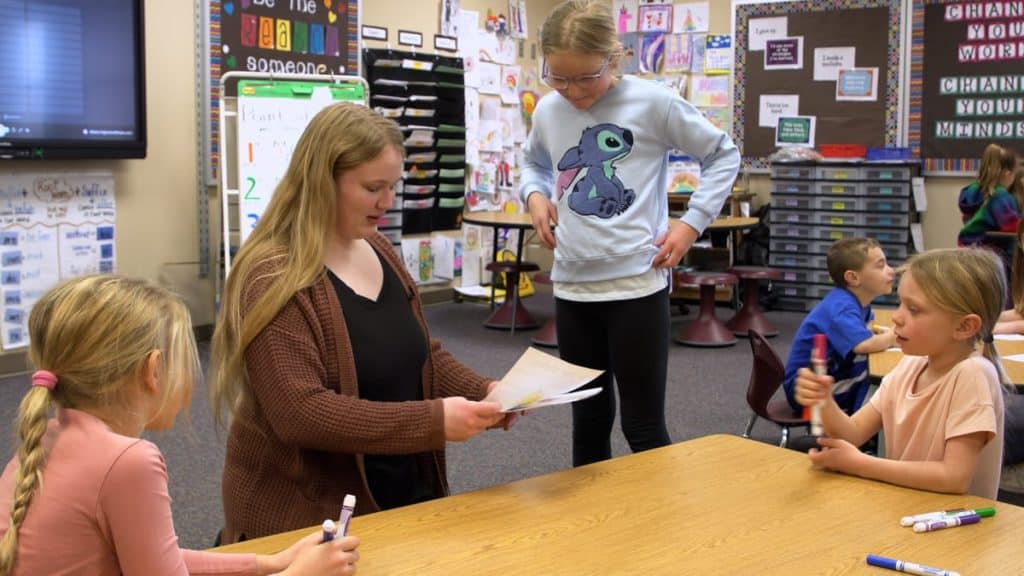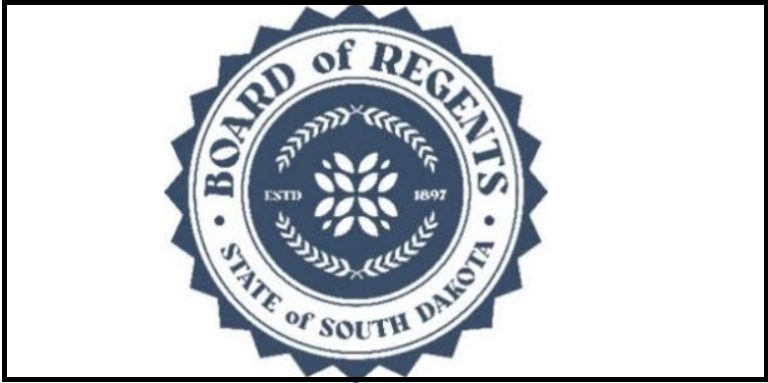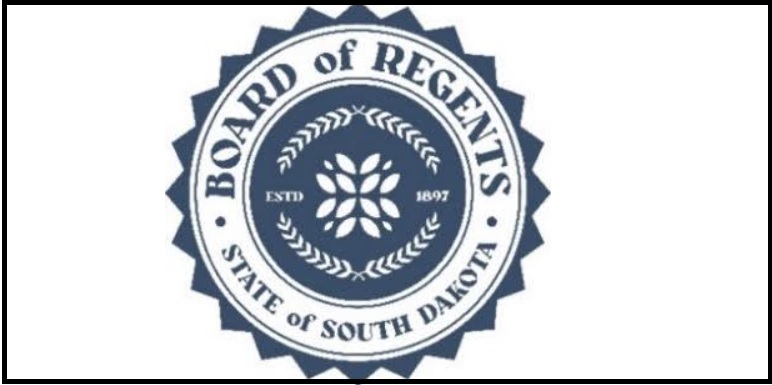HARRISBURG, S.D. – Education is not immune to South Dakota’s ongoing workforce challenges. While much of the Legislature’s focus is on teacher salaries, some are working to grow the pool of future teachers.
Around 300 teaching positions sat vacant around the state as of last month, according to the Associated School Boards of South Dakota. It’s a shortage Secretary of Education Joseph Graves has never seen in his decades as a teacher and administrator.
“It’s always been difficult to fill certain positions,” he said earlier this month in an interview with South Dakota Public Broadcasting. “If you had a high school instrumental music position, or you had an upper level math, upper level science – those could be difficult at any time in history.”
In the past decade or so, though, Graves said there were fewer and fewer candidates for commonly easy-to-fill positions.
“When I began in my superintendency over 30 years ago, we would have file cabinets full of elementary applicants,” he said. “When those (positions) began to be in a shortage, we knew we were in a real definite teacher shortage. And in fact, I think the teacher shortage right now is historically unprecedented.”
The blue ribbon promise of higher teacher pay
Graves was superintendent of the Mitchell School District when the half-cent sales tax increase brought forth by a blue ribbon task force took effect in 2017. The increased tax revenue was meant to bolster teacher salaries.
“It definitely made it easier to hire teachers,” said Graves. “It also moved us from 51st in the nation for our teacher pay to 47th. What we’ve noticed, though, in the last couple years is this drifting back down.”
With South Dakota now back to 49th in the nation for teacher pay, Gov. Kristi Noem’s administration wants to ensure school districts allocate the increased funding to teachers, rather than other needs.
“Yes, I know that schools have their own challenges,” Noem said in her 2024 State of the State address. “But the blue ribbon recommendation wasn’t just that teacher pay would go up. The blue ribbon promise was that teachers would be the first priority, that they would be paid more. So let’s do it.”
While legislative efforts to keep the promises of the blue ribbon task force are ongoing in Pierre, other efforts to recruit future teachers play out across the state. When schools saw the state’s investment in education following the task force, some administrators wondered how to ensure the pool of future educators continued to meet demand.
“We get this bump in pay, everybody’s heading in the right direction, but we weren’t seeing an increase in kids choosing education as a career path,” said Travis Lape, director of innovative programs for the Harrisburg School District. “Teachers are always very good at telling kids other opportunities besides our own career.”
Finding future teachers through Educators Rising
To help spread the word about the benefits of a career in education, Lape was part of a group of teachers and administrators that established the first South Dakota chapter of a group called Educators Rising.
The national organization launched in 2015 and has since amassed more than 30,000 participating students and teachers. Its mission is to encourage high school students to pursue a teaching career through skill development and hands-on experience. It offers competitions related to public speaking and other teaching skills at state and national conferences.
While considering ways to leverage Harrisburg career and technical education programs, Lape remembered his own experience with Future Farmers of America as a high schooler.
“I didn’t have cows and pigs – I didn’t grow up like that – but I had the leadership side. So parliamentary procedure, public speaking, job interviews. Those were the events that I thrived in, in FFA,” said Lape.
He also traveled to state and national conferences as a student thanks to his involvement with FFA. “I got to see the world through the organization. And I said, ‘We don’t have that for education.'”
Lape is now state director of Educators Rising South Dakota, which over the past six years has grown to more than 350 student members spread across 50 chapters in the state.
Some schools treat it like any other extra curricular club with a teacher advising. Others, like Harrisburg High School, offer it as an extension of existing career and technical education classes, which weave competition material into classroom assignments.
‘Our future teachers are in our schools’
One competition area centers on lesson planning and development. High school students create a lesson plan and deliver it in a real classroom, while judges review a recording of the lesson during competition.
Katelyn Christopherson, a junior at Harrisburg High School and a state officer with Educators Rising South Dakota, placed third last year at the national Educators Rising conference for her lesson plan geared toward middle schoolers.
This year, Christopherson created a lesson plan that uses ice cream to explain states of matter, which she recently presented to second graders at Explorer Elementary in Harrisburg.
“The thing I pride myself on when I do these lesson plans is making sure I have multiple different ways to learn it because everybody is so different,” said Christopherson.
Her lesson plan included a demonstration of an ice cream recipe, a YouTube video, and a coloring worksheet. Christopherson fielded questions from students and managed the classroom as the students’ full-time teacher observed.
“I feel like there’s no other real way to understand this is what you want to do,” said Christopherson. She enjoys the hands-on experience and connections she’s made with students in other districts through Educators Rising South Dakota.
“I feel like something that pushes people away from education is, you know, the money or just some other factor,” said Christopherson. “But if we’re putting that spark in and also people are working towards it – because obviously we don’t do it for the money – but I feel like by encouraging those people in other ways that want to be teachers, I feel like we can even help the shortage even more.”
While pay is an important retention measure for teachers, Lape said giving students an opportunity to explore a teaching career early is a critical part of ensuring there’s a pool of potential educators for years to come.
“There’s a national statistic out there that says almost 60% of teachers live and work within 20 miles of where they grew up,” said Lape. “Our future teachers are in our schools.”













